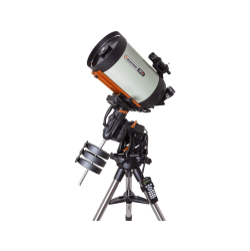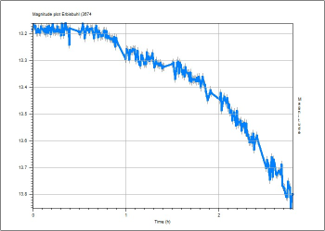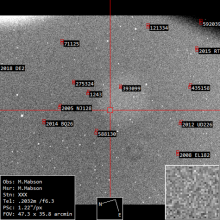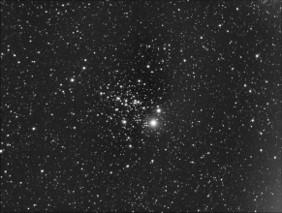Capitol Technology University Astronautical Engineering (AE) program was recently awarded a grant by the Maryland Space Grant Consortium to establish the Asteroid Large aperture PHotometry exoplAnet transit (ALPHA) observatory, which will be located on the university campus.
What is ALPHA?:
The Asteroid Large aperture PHotometry exoplAnet transit (ALPHA) observatory is comprised of a complete NexDome system housing an 11-inch Celestron Optical Tube Assembly (OTA) mounted on an equational mount. This observatory will continue NASA’s planetary defense mandate by performing follow-up observations of Near-Earth Objects (NEOs), such as comets, meteoroids, and asteroids, to characterize their orbits and potential impacts to Earth. ALPHA will monitor between 50 to 100 objects per night, including variable stars, exoplanet transits, and newly discovered type I and type II supernovae.
How will ALPHA observe Near-Earth Objects (NEOs)?:
The majority of NEO objects are undetectable by the naked eye and require a telescope with a large aperture to resolve the object. For example, some comets can shine bright enough to be seen by the human eye, but most only produce a comet tail or brighten as they enter the inner solar system. The ALPHA observatory will use an 11-inch Celestron telescope configured for F/2 observations mounted on an equatorial mount. The complete system, including cooled CMOS camera, computers, and weather monitoring will be housed in a NexDome observatory system on the north side of the university campus. Observing NEOs requires the system to monitor a portion of the night sky by taking short 30-second exposures over 5-minute intervals. During this process, background objects such as stars and galaxies will not move against the sky, but foreground objects such as asteroids will move. By observing these movements, ALPHA will be able to generate orbit predications, measure rotational periods, and measure the speed of each NEO object. Depending on the target, ALPHA can capture approximately 10 - 20 minutes’ worth of data before moving to the next object. ALPHA will use the Minor Planet Center (MPC), which provides ephemeris data for all discovered and/or unclassified NEO objects, to retrieve and send the latest positional data of known and recently discovered objects.
How much ALPHA data can be generated on a given night?:
During spring or summer evening observations, ALPHA can generate between 10 - 20 GB of data per night. During winter observation periods, ALPHA can generate approximately 15 - 30 GB of data per night. This data will be transferred to the ALPHA control center located in the Capitol Technology University Space Flight Operations Training Center for review and analysis.
How will ALPHA be integrated into the Astronautical Engineering (AE) program?:
The ALPHA observatory provides the AE program with a unique opportunity for scientific contribution to improve the overall understanding of NEO objects. Having access to real-world objects to perform orbit determination provides AE program students with invaluable experience that will benefit them not only in the classroom setting, but also with future employment opportunities. ALPHA will also be open to other majors such as Cybersecurity, to develop additional programs for processing and analyzing data from the observatory.
How will ALPHA be operated?:
Many observatories have a telescope operator inside the dome operating the telescope and planning for the next target. ALPHA will use a unique operations concept: the system will be operated automatically. Students will plan observation targets and load the plan to ALPHA. This plan will detail target position, exposure time, focus parameters, observation pause conditions and observation ending time. Once transferred to ALPHA and observations begin, ALPHA will automatically locate and target each object without human intervention. During observations, students will have the ability to remote into ALPHA to monitor observatory status and retrieve data.
ALPHA Outreach:
ALPHA will hold a monthly ZOOM session called “Night with ALPHA” to allow perspective students to learn more about the project and view a live feed of observatory operations.
Student Involvement:
The Capitol Technology University Astronomy Club member and Astronautical Engineering (AE) program student Matthew Lewin, alongside Professor Mabson, developed initial requirements for ALPHA and refined how the observatory would be operated. ALPHA is a great example of how students’ interest in a project can help a project flourish and provide experience with the engineering development life cycle.
ALPHA product examples:
The following are examples of image data that ALPHA can generate.






